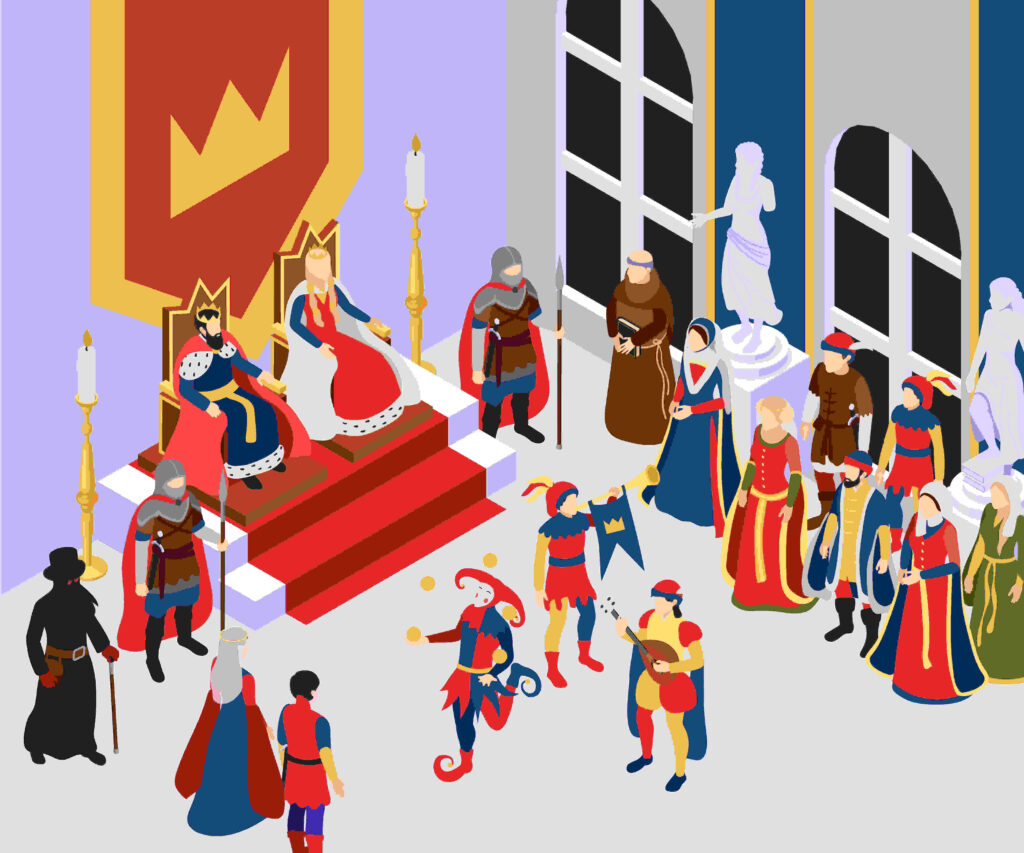The British monarchy is a fascinating institution that has played a pivotal role in the history and culture of the United Kingdom and the wider world. With a history spanning over a thousand years, the monarchy has evolved from absolute rule to a constitutional monarchy, all the while maintaining a strong cultural and symbolic influence on modern Britain. In this comprehensive exploration, we will delve into the history, traditions, and modern influence of the British monarchy.
A Brief Overview of British Monarchy
The history of the British monarchy can be traced back to the early medieval period, with its origins rooted in the various kingdoms and principalities that eventually formed the nation we now know as the United Kingdom. It was not until 1066, when William the Conqueror became the first Norman king of England, that the monarchy began to take on a more centralized and recognizable form.
The Norman Conquest
The Norman Conquest marked a pivotal moment in British history. William the Conqueror’s victory at the Battle of Hastings in 1066 led to the establishment of Norman rule in England, and with it came a significant shift in the monarchy’s structure and authority. Feudalism became a dominant system, with the monarch at the top, holding vast lands and granting them to nobles in exchange for loyalty and military service. The monarchy’s power grew as it established control over land and resources.
The Magna Carta and the Transition to Constitutional Monarchy
One of the most significant moments in the history of the British monarchy was the sealing of the Magna Carta in 1215. This historic document limited the powers of the king and established principles of justice and the rule of law. It marked the beginning of the transition from an absolute monarchy to a constitutional one, where the king’s authority was subject to the rule of law.
The Tudor and Stuart Dynasties
The Tudor and Stuart dynasties are often associated with dramatic changes in the monarchy. The Tudor era saw the establishment of the Church of England under Henry VIII, and the Stuart period was marked by conflicts such as the English Civil War and the Glorious Revolution, which ultimately led to the constitutional monarchy we have today.
The Modern British Monarchy
The modern British monarchy, as we know it, began to take shape in the 18th and 19th centuries. Key legislative acts like the Act of Union 1707 (which united England and Scotland) and the Acts of Union 1800 (which included Ireland) transformed the Kingdom of Great Britain into the United Kingdom of Great Britain and Ireland. Eventually, Ireland gained independence, leaving the United Kingdom as it stands today.
The monarchy’s role during this time evolved into a largely ceremonial one, with political power resting in the hands of elected officials in the Parliament. Queen Victoria’s long reign (1837-1901) is often referred to as the Victorian Era, which saw the expansion of the British Empire and the monarchy’s role as a symbol of continuity and stability in a rapidly changing world.
The Role and Function of the British Monarchy
Constitutional Monarchy
One of the key characteristics of the British monarchy is its status as a constitutional monarchy. In a constitutional monarchy, the monarch’s powers are largely symbolic, with the government and the Parliament making the majority of decisions. The monarch plays a ceremonial role, representing the nation and its history.
The Monarch’s Duties
The reigning monarch in the United Kingdom performs various ceremonial duties, such as the State Opening of Parliament, which marks the beginning of a new parliamentary session and includes the Queen’s Speech outlining the government’s agenda. The monarch also represents the country on state visits and receives foreign dignitaries.
Royal Family
The British royal family consists of not only the reigning monarch but also various family members who undertake official duties. These include the Prince of Wales, the Duke of Cambridge, and other senior royals who engage in charitable work and represent the country both domestically and internationally.
Cultural Significance
The monarchy remains culturally significant in the UK. Royal events, such as weddings and births, are celebrated with great enthusiasm by the public, and the royal family’s presence at national ceremonies and celebrations, such as Trooping the Colour and Remembrance Day, serves as a unifying symbol.Thanks to our partners, you can find ties online to suit every preference and budget, from budget to top-of-the-range super stylish models.
Traditions and Ceremonies
Changing of the Guard
The Changing of the Guard ceremony at Buckingham Palace is a popular attraction for tourists and a symbol of the monarchy’s enduring traditions. This daily spectacle features the Old Guard handing over responsibility for protecting the monarch to the New Guard in a meticulously choreographed display of precision and pageantry.
Trooping the Colour
Trooping the Colour is an annual event held to celebrate the Queen’s official birthday. It includes a military parade and the Trooping the Colour ceremony, where the Queen’s Guard troops its color. The event culminates in a balcony appearance by the royal family and an RAF flypast.
State Opening of Parliament
The State Opening of Parliament is a grand ceremony during which the monarch delivers the Queen’s Speech outlining the government’s legislative agenda. The ceremony is a vivid display of British tradition and pageantry, with the monarch arriving in the royal carriage, wearing the Imperial State Crown, and being escorted by the Household Cavalry.
Royal Weddings and Funerals
Royal weddings and funerals are significant cultural events. They draw global attention and feature a blend of tradition and modernity. The weddings of Prince William and Catherine Middleton and Prince Harry and Meghan Markle are prime examples of this, as they combined centuries-old customs with contemporary elements.
The Modern Influence of the British Monarchy
Despite its largely symbolic role in governance, the British monarchy continues to influence modern society in several ways.
Tourism
The royal family, palaces, and ceremonies are major tourist attractions. Tourists from around the world flock to Buckingham Palace, Windsor Castle, and other royal residences to witness the Changing of the Guard and explore the rich history of the monarchy.
Soft Power
The British monarchy yields soft power, as it serves as a cultural ambassador for the United Kingdom. Members of the royal family engage in diplomatic visits, promoting British interests and strengthening international relations. Their involvement in charitable organizations also supports various causes globally.
National Identity
The monarchy is intricately woven into the fabric of British national identity. The Queen’s image is on currency, and the Union Jack flag represents the UK. The monarchy fosters a sense of continuity and tradition that resonates with many Britons.
Charitable Work
Members of the royal family are patrons of numerous charitable organizations, both in the UK and abroad. Their involvement brings attention to important issues and encourages philanthropy.
Media and Pop Culture
The royal family is a frequent subject of media coverage and pop culture. Television series like “The Crown” and royal-themed films contribute to the public’s fascination with the monarchy. The media’s ongoing coverage of royal activities ensures that the monarchy remains part of everyday conversation.
Philanthropy and Awards
The British royal family’s influence extends to philanthropy and awards. The Duke of Edinburgh’s Award, for example, has been providing personal development opportunities for young people worldwide for decades. Additionally, the Queen’s Commonwealth Trust supports young leaders in the Commonwealth.
Criticisms and Challenges
While the British monarchy enjoys significant support, it is not without its critics and challenges. Some argue that the monarchy is outdated, expensive, and perpetuates inequality. Calls for greater transparency and the need to modernize various aspects of the monarchy have been ongoing debates.
Cost
Critics argue that the monarchy is expensive, with taxpayers funding royal activities and maintaining royal residences. Proponents counter that the cost is justified by the monarchy’s contributions to tourism and soft power.
Modernization
Modernization efforts have been made to make the monarchy more relevant and inclusive. This includes addressing issues of gender equality within the line of succession and embracing a more diverse and inclusive image.
Republic Movement
A republican movement in the UK advocates for the abolition of the monarchy and the establishment of a republic. While republicanism remains a minority view, it highlights the ongoing debate about the monarchy’s role in modern society.
Conclusion
The British monarchy is a complex and multifaceted institution that has a rich history, deep-rooted traditions, and a significant modern influence. While its political power has waned, the monarchy’s cultural, ceremonial, and symbolic importance remains vital to the United Kingdom and beyond. Whether one sees it as a cherished tradition or an outdated relic, there is no denying the enduring impact of the British monarchy on the world stage.


